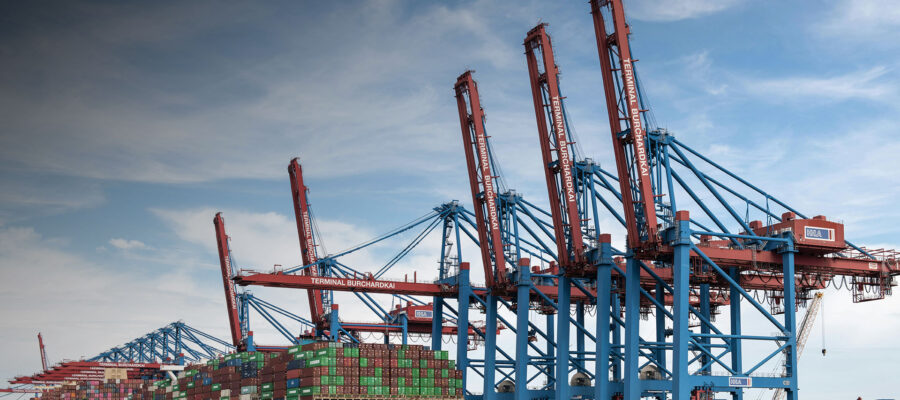This post has already been read 19578 times!
When Henry Ford launched his Rogue manufacturing complex near the city of Detroit at the beginning of the 20th century it was a manufacturing marvel. Raw materials entered one side of the factory, and finished vehicles drove out on the other side.
While making the wooden parts such as the frame, dashboard, and steering wheel he generated enough scrap wood to launch a profitable byproduct for your backyard BBQ – Kingsford charcoal, a brand that lives on to this day.
This is a fantastic example of how an optimized ecosystem and contained supply chain can produce incredible amounts of profitable products at a rapid pace.
Today, most organizations have come to outsource various supply chain functions to focus on their core capabilities, improve costs, or expand their global footprint. For every transaction, several external parties specialized in various parts of the process collaborate on a variety of services, from manufacturing to warehousing and distribution to shipping and last-mile delivery. With that, the concept of a supply “chain” has become largely obsolete, as B2B ecosystems or networks have fundamentally reshaped how we do business today.
Today, the concept of a supply chain has become largely obsolete, as B2B ecosystems have fundamentally reshaped how we do business. Share on XWhile this has several benefits, including access to superior, specialized resources, it also implies that supply chain management will inevitably remain a multi-enterprise group effort.
As with any group activity, the coordination of activities and the alignment of priorities are critical to the success of the final outcome. In a multi-enterprise ecosystem where an organization’s own success is dependent on multiple suppliers and service providers, often delivering to multiple buyers, our ecosystems are becoming increasingly complicated.
In the 1950s, in an effort to optimize these expanding ecosystems, organizations like Toyota popularized strategies like Lean Manufacturing and Kaizen. These terms can loosely be translated to “improvement” and are generally used to describe a gradual, piecemeal, but cumulative betterment of individuals, processes, organizations, or entire societies.
Nobody would dream of building a new factory today without first considering the physical supporting infrastructure. Modern organizations must equally consider their digital ecosystem and their ability to thrive in what is today’s supply chain reality.
The aphorism, “a rising tide lifts all boats”, coined by John F. Kennedy, is the idea that an improved economy will benefit all participants of that economy – the supply chain is no different. By improving visibility, enhancing collaboration capabilities, and offering automation opportunities for all parties, everyone wins.
Collaboration across multi-enterprise supply chain networks is crucial for successful operations. As more external parties contribute to delivering a positive customer experience, it’s important to adapt our approach and consistently improve collaboration with those partners.
Multi-Enterprise Supply Chain Networks
A multi-enterprise supply chain network is a B2B ecosystem that enables multiple parties to collaborate and optimize business processes in real-time across a shared data set. One Network Enterprises has built a solution that raises the bar for supply chain technology with three breakthrough constructs:
- Multi-Party System of Orchestration – Enterprises engage directly on the network to synchronize demand and supply across all tiers and all nodes. The network interoperates with existing enterprise applications, directly targeting data and process latency. The network also supports a fundamental shift to incorporate outside-in signals of change as they occur.
- Continuous, Incremental Planning & Execution – Today, operations must tightly couple constrained (i.e., feasible) operational planning with optimized execution. The solution breaks legacy data and process silos to propagate change, not only across functional decision making, but also with supply chain partners. Compressing the cycle time between planning and execution, plans become systematically more aligned to emerging constraints, and execution no longer sub-optimizes against functional KPIs.
- AI-driven Collaborative Flows & Risk Framework – The network continuously monitors, detects, assesses, and recommends actions to mitigate risk and resolve disruptions. Each participant derives value in managing operations not as isolated entities, but as collaborative partners respecting real-world dynamics.
This enables modern supply chain networks to autonomously, and incrementally learn, embracing constraints, risks, ambiguity, and variability across functional and enterprise boundaries. Together, these innovations help organizations transform their supply chains to be more effective, efficient, and resilient, enabling organizations to be more competitive and profitable.
- 3 Foundations for an Effective Multi-Enterprise Supply Chain Network - July 31, 2024
- What is a Digital Supply Chain Network? - June 25, 2024
- 4 Types of Supply Chain Control Towers - February 8, 2023



